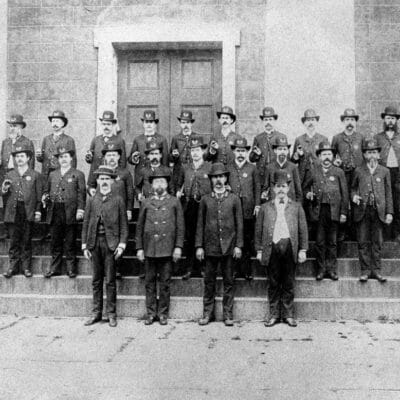
The Lynchburg Police Department (LPD), as it is organized today, was not officially established until 1866, or shortly after the end of the Civil War. City Council, which was known then as the Common Council, adopted an ordinance to found a “Police Force for the City of Lynchburg.” However, as long as there has been a town or city of Lynchburg, there have been police officers protecting it.
The first incarnation of the Lynchburg Police Department was a “Watch” or “Patrol” officer in 1805 when Lynchburg was incorporated as a town. As the town grew more prosperous and became a trading hub via canals and railroads, the Common Council saw the need for a Night Watch. The Night Watch consisted of seven men who protected the entire city. These men received $250 annually, which is a little under $10,000 a year with inflation.
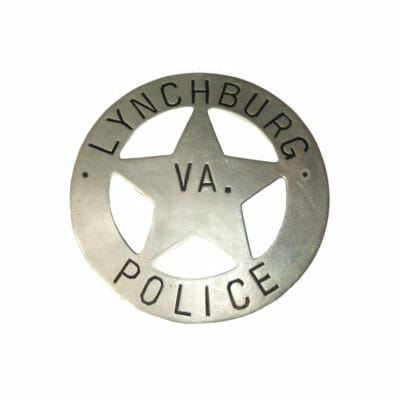
Following Reconstruction, Lynchburg had a period of prosperity with a population of 15,000 people. With that increase in people and manufacturing came the need for a larger police presence and the appointment of the City’s first Police Chief, A.H. Pettigrew. This spurred the Common Council to create the foundation for the department as we know it today. The LPD went from a Night Watch of seven to a full-fledged department of almost 30 sworn officers. These men patrolled the streets primarily on foot and had to share pistols with the opposite shift. The department also lost its first officer in the line of duty, William Halsey Gouldman, in 1883.
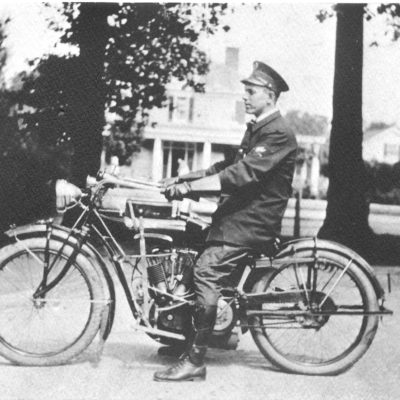
The early 1900s saw technological changes for the agency. In 1903, Gamewell call boxes that used Morris Code signals were installed across the city to allow officers to check-in, report crimes, or request backup. In 1914, the LPD went from horse drawn wagons to its first automobile. The same year, the department also got two motorcycles and formed the Traffic Unit.
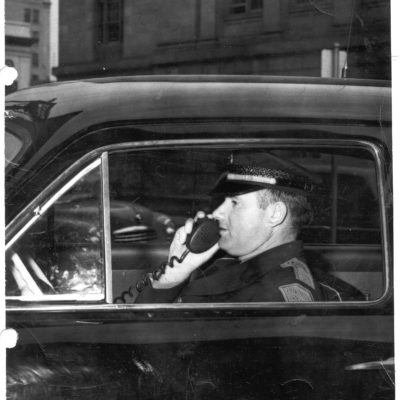
After World War II, the LPD’s ranks grew to 53 sworn officers. The department went through some substantial changes in the 1940s and 1950s, including adopting two-way radios, which improved officers’ ability to communicate and protect the city. The LPD instituted a structured departmental training program, something that many departments did not implement until the 1960s and 1970s. The LPD also started hiring women and African Americans in more visible roles. In the 1950s, while not sworn, women wore uniforms and worked as Traffic Safety Officers at Lynchburg City Schools. In 1956, the LPD hired sworn Officers Farrow and Dickey, the department’s first African American officers.
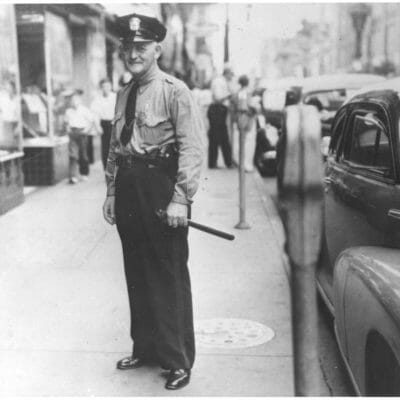
Lynchburg continued to grow and evolve and so did the LPD. In the 1960s, the department made it a mission to ensure that officers were highly trained and serving the city to the best of their abilities. The LPD instituted an annual “Lynchburg Police Department Training School.” This led to the eventual creation of what is now the Central Virginia Criminal Justice Academy, which oversees training certified law enforcement officers for Central Virginia law enforcement agencies. In response to community concerns, the department also created specialized units for community engagement in the form of the Youth Bureau and a Vice/Narcotics Unit.
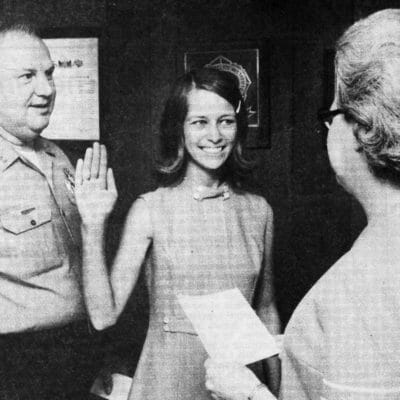
The LPD similarly saw the importance of creating additional specialized units in the 1970s. During this era, the department formed the Investigations Bureau, which focused on persons, property, and Vice/narcotics components. The department also created the Cadet Program. The focus of this program was on finding capable and qualified young people to become police officers. The need for officers was high, as the City of Lynchburg expanded to roughly 50 square miles. The department also understood the need to diversify more in finding qualified officers that represented their community. In 1974, the LPD hired its first sworn female officer, Wendy T. Ford. She was the first of many women who have sworn to protect the City of Lynchburg.
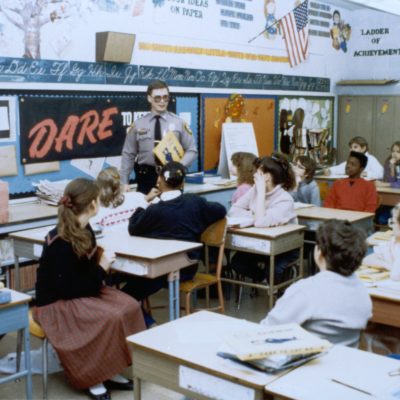
The 1980s saw the adoption of the “enhanced 911” phone system, additional technology, a Computer Aided Dispatch system, a Street Crimes Division, and the Drug Abuse Resistance Education or D.A.R.E. program. The LPD also became the 124th agency nationwide to be formally accredited by the Commission on Accreditation for Law Enforcement Agencies, Inc. (CALEA) in 1989. This accreditation is reserved for public safety agencies that have demonstrated professional excellence and a dedication to community-oriented policing. The LPD maintains this accreditation to date.
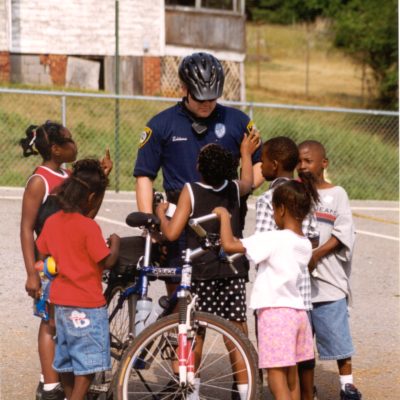
In the 1990s, the LPD implemented additional programs and departments focused on improving the community that are all still active today. In 1997, the LPD held its first Citizen’s Police Academy. This program gives citizens a chance to see behind the scenes and learn about the LPD’s operations. The agency also began a School Resource Officer program. The city now has officers dedicated to each high school and middle school. The 1990s also brought the foundation of the Bike Patrol and K-9 units.
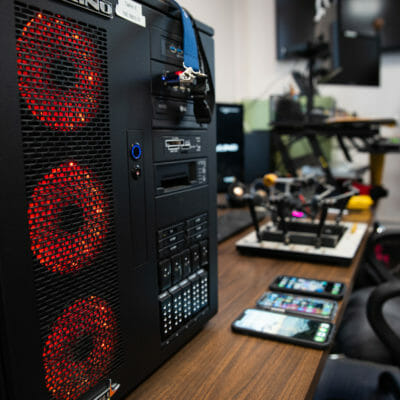
In recent years, the department has adopted many technological advances. Officers are fully equipped with computers, radios, phones, and in-car and body worn cameras. The department has come a long way from horse drawn carriages with gongs instead of sirens. LPD officers and professional staff are continually trained with a focus on serving Lynchburg’s residents and visitors through intelligence led policing, community engagement, and enforcement.
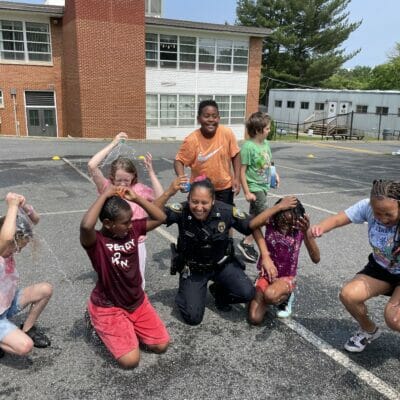
The mission of the Lynchburg Police Department is “We partner with our community and protect our citizens, while respecting the rights and dignity of all persons.” This department has protected and served the City of Lynchburg for over 200 years. The LPD will continue to partner with and protect the people of Lynchburg with professionalism, dedication, and compassion.